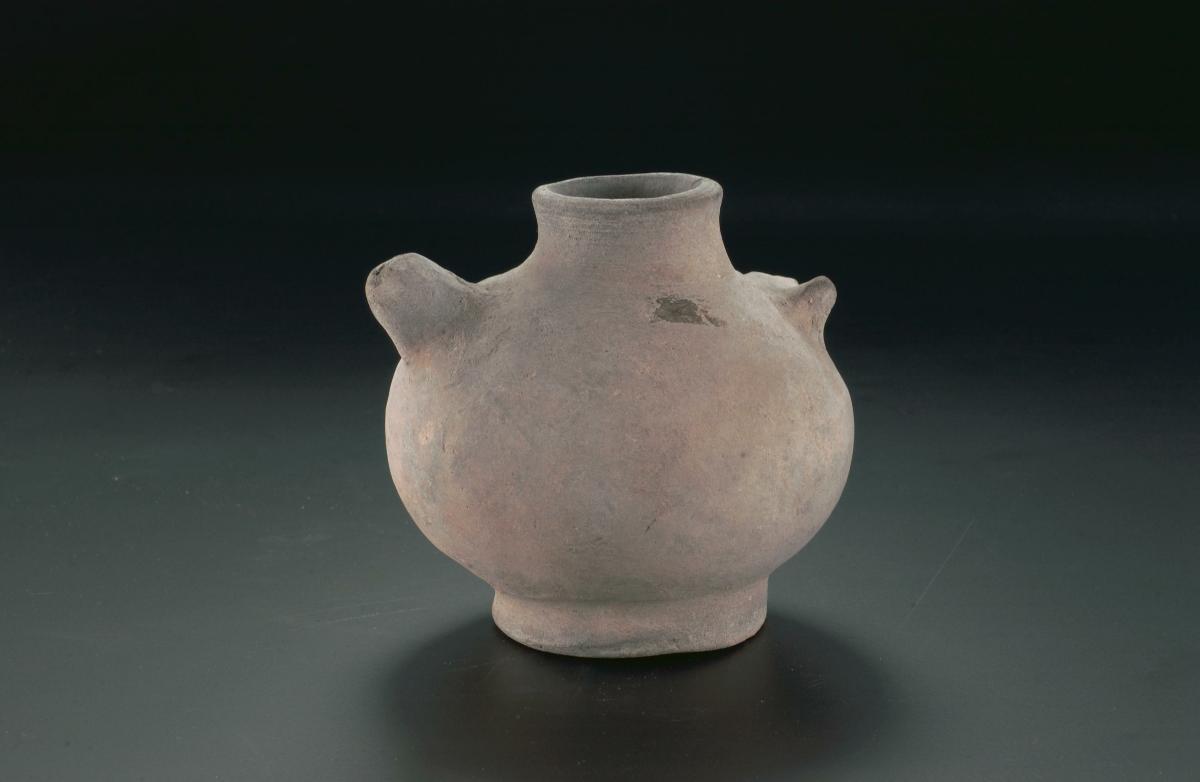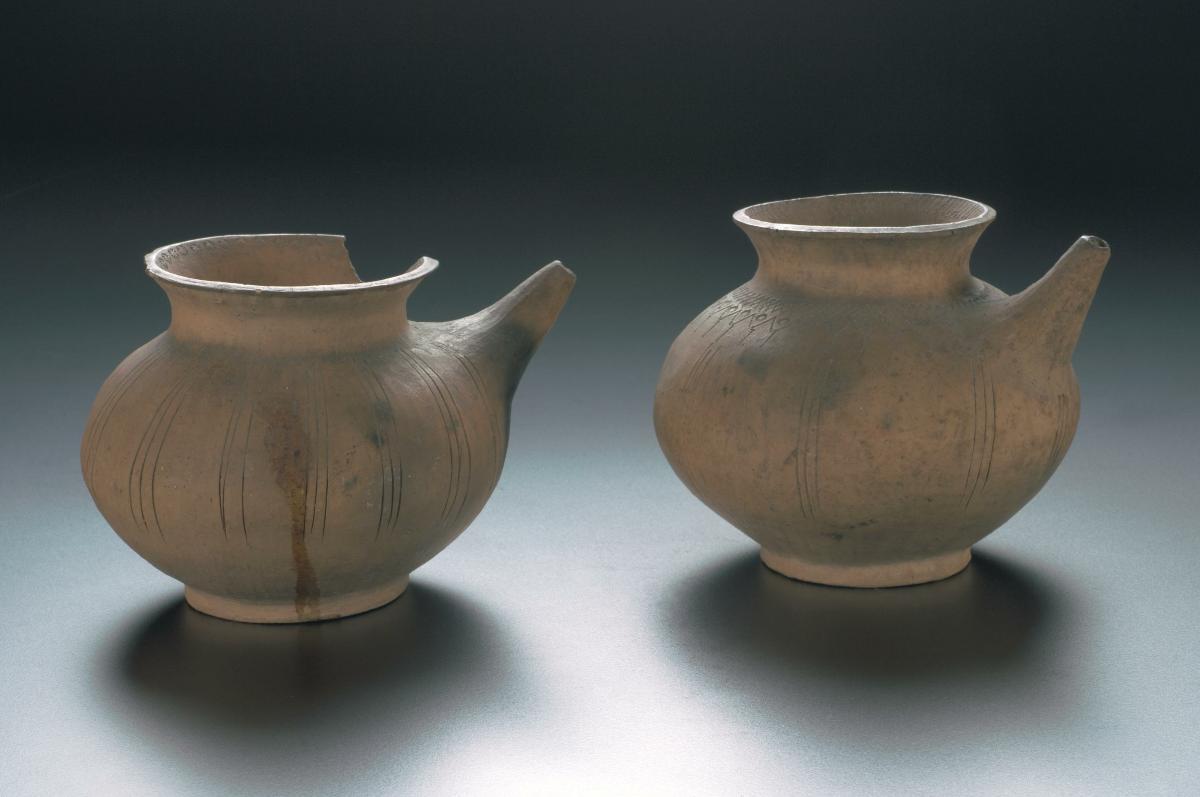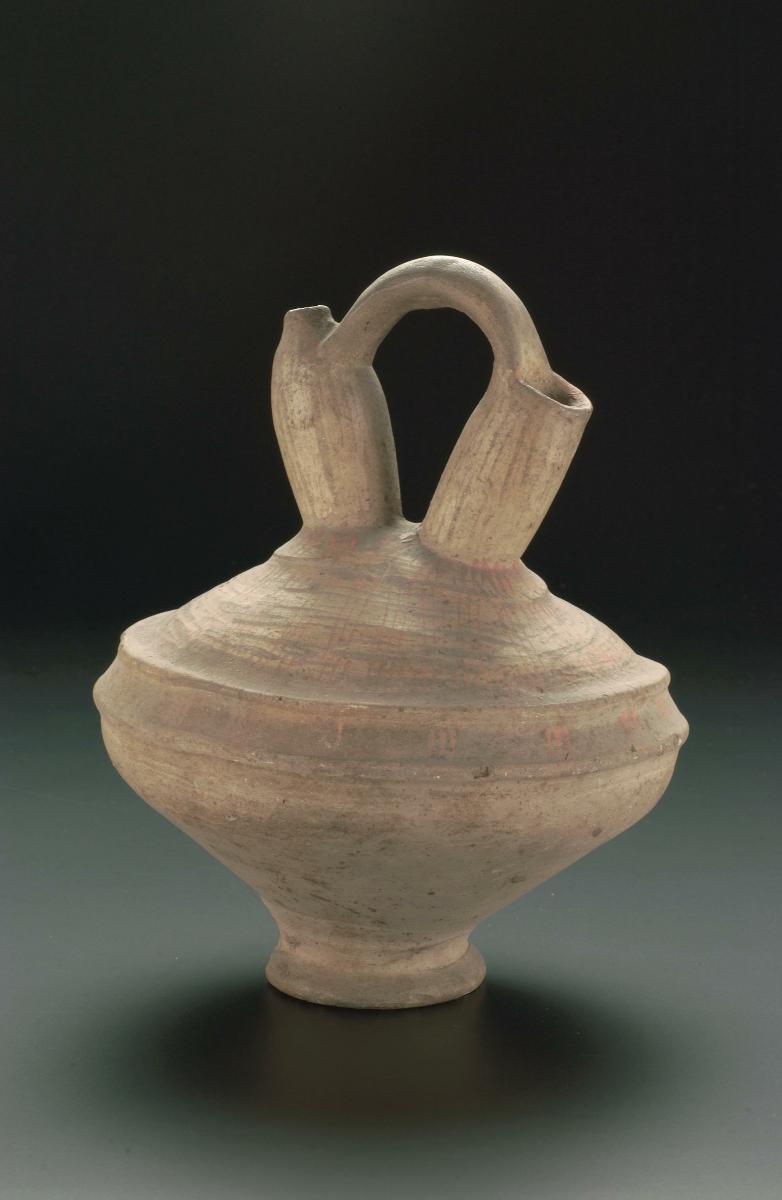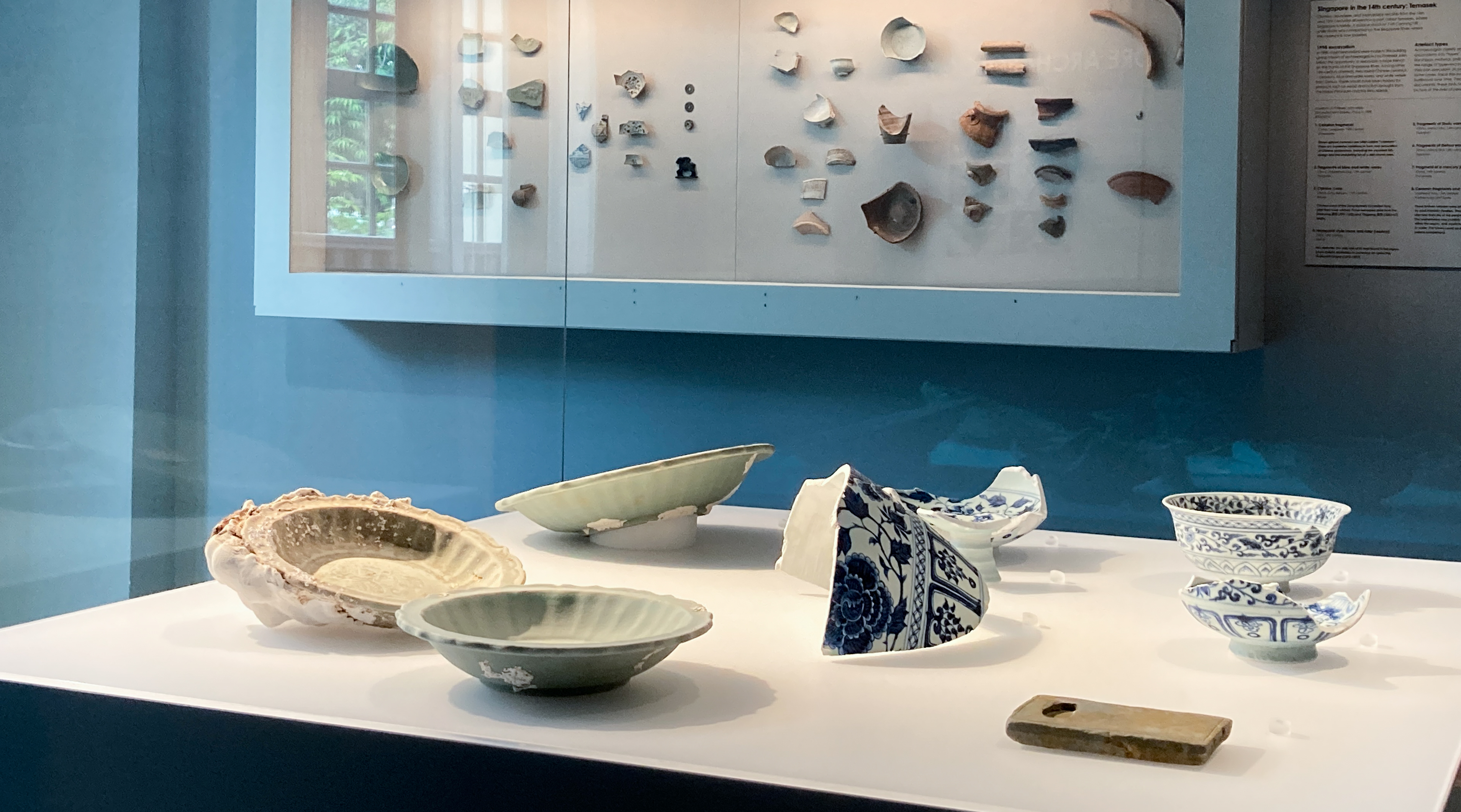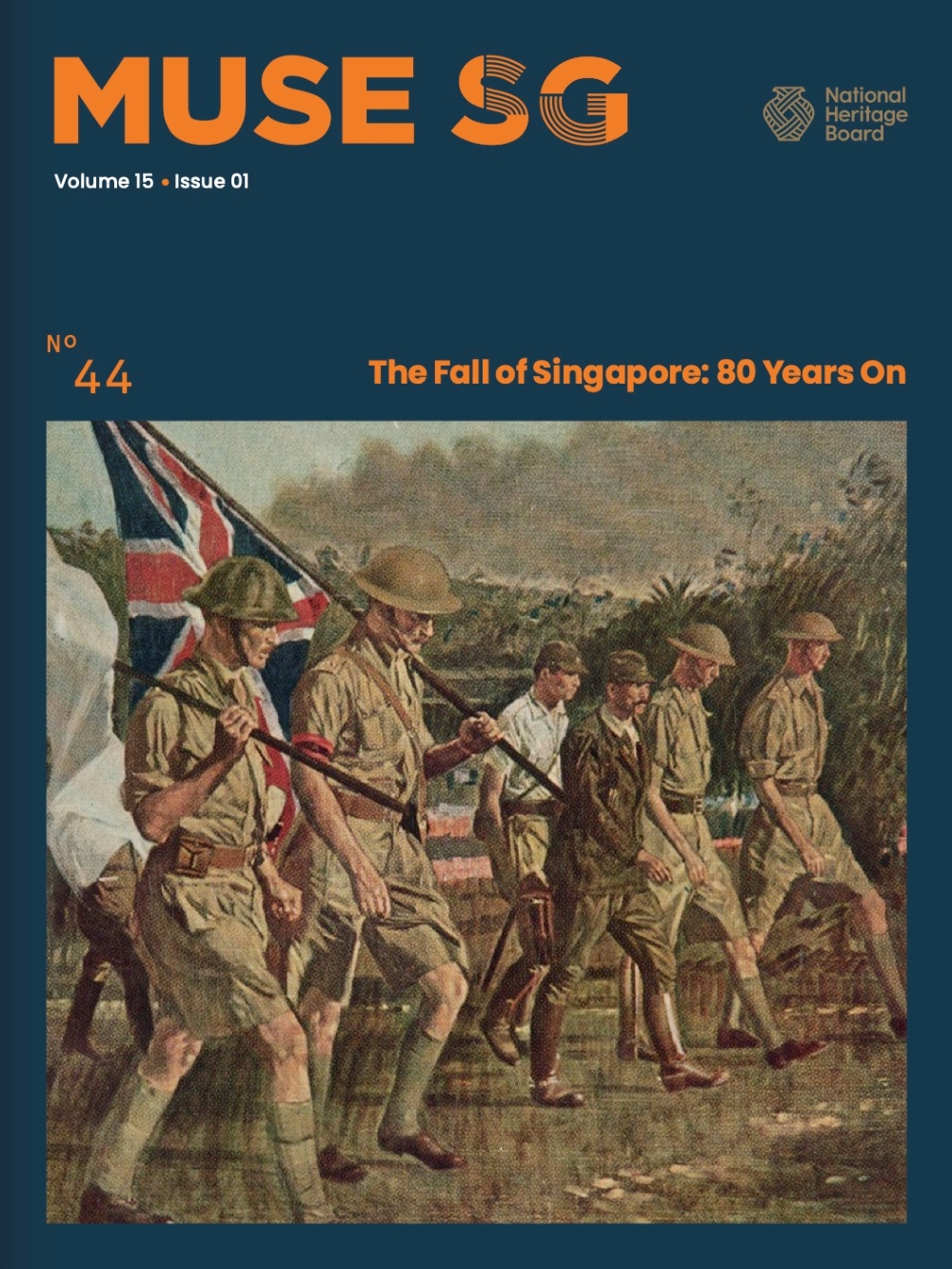This unglazed, earthenware water vessel has a globular form, a short spout on the shoulder, a high footrim, and an irregularly shaped flat base. It is partially blackened from firing. Kendi is a Malay term derived from the Sanskrit word ‘kundika’, a ritual pouring vessel. A typical kendi has a bulbous body, a neck which is used for holding the vessel and a spout. Many forms of kendi were probably inspired by metal prototypes. The tradition of using kendi in Hindu-Buddhist rituals suggests that this type of vessel originated from India. Kendi have been used in Southeast Asia for at least a thousand years, as indicated by depictions on temple wall reliefs dating back to 9th century CE. As an early ritual pouring vessel, it is somewhat similar to kendi found in other areas of Southeast Asia.




